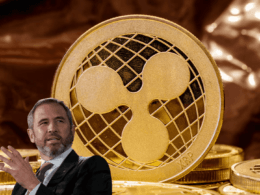Table of Contents Show
Stable Coin News
Global leaders are establishing universal guidelines as well as criteria for the crypto market after its headline-making implosion in 2014. While they show up to have actually gotten to an agreement on the majority of points, progressed as well as arising economic climates seem to be diverging on the therapy of stablecoins.
Advanced economies that compose the Team of 7 (G-7) appear even more available to enabling and also managing stablecoins, which are connected to the worth of various other assets such as fiat currencies. However arising economies represented in the wider group G-20 are asking for tougher restrictions, and even restrictions, over concerns that widespread stablecoin use might offer a reasonably higher risk to financial policy in these jurisdictions.
Differences between the two bodies could possibly delay the approval of international norms for stablecoins, or at least endanger to fragment the merged oversight imagined by economic regulatory authorities around the globe, the officials stated. Nonetheless, as the FSB likewise mentions, its standards allow countries some versatility in executing the rules according to their varying requirements, the authorities added.
International leaders are setting up global rules as well as criteria for the crypto market after its headline-making implosion in 2015. While they appear to have actually gotten to an agreement on many things, progressed and emerging economic situations seem to be deviating on the therapy of stablecoins.
Advanced economies that make up the Team of 7 (G-7) appear more open to permitting and also controling stablecoins, which are linked to the worth of other properties such as fiat money. However emerging economic climates represented in the larger grouping G-20 are calling for harder constraints, and even prohibitions, over concerns that prevalent stablecoin use could offer a reasonably higher risk to monetary plan in these jurisdictions.
Arguments in between both bodies might possibly delay the acceptance of worldwide standards for stablecoins, or at the very least threaten to piece the unified oversight envisioned by financial regulatory authorities worldwide, the officials claimed. However, as the FSB likewise explains, its criteria allow countries some flexibility in applying the guidelines according to their differing demands, the authorities included.
” I do not directly think the introduction of crypto assets or stablecoins can seriously or adversely affect the macro economic situation or influence monetary plan of the U.S., Euro area or Japan. Yet macro-financial ramifications are far more significant in arising markets,” stated Toshiyuki Miyoshi, replacement director-general of the Guidance Bureau at Japan’s Financial Services Firm, which is additionally part of the nation’s G-7 presidential initiatives fit global crypto regulations.
With regards to stablecoins, innovative economic climates “don’t have any kind of worries,” but “emerging economic climates have major worries,” claimed an elderly authorities of the G-20 not licensed to talk on the matter openly. “Stablecoin law is a point of difference.”
International regulators sprung into action after the collapse of the terra USD stablecoin in Might 2022 triggered almost $60 billion to evaporate from markets, despite the fact that some regulatory authorities have said such implosions in crypto have actually had no direct impact on wider financial stability.
Global Norms
The two collections of nations have actually dedicated to taking the lead on mounting worldwide collaborated norms for crypto. Japan as well as India currently hold presidencies of the G-7 as well as the G-20 specifically. The G-20 is comprised of the G-7 territories, in addition to 13 others, consisting of 10 arising economies.
Together, both bodies, to varying degrees, are relying upon worldwide standard-setters such as the International Monetary Fund (IMF), the Financial Stability Board (FSB) and the Financial Action Task Force (FATF) to make pertinent recommendations and policies for the sector.
While both collections have vowed to implement FATF’s anti-money laundering regulations for crypto, recent declarations made by the forums have actually indicated differences in just how they check out the therapy of stablecoins.
The G-7, for instance, has said its nations will line up with the FSB’s suggestions for stablecoins, which are concentrated on the impact of stablecoin usage on broader economic stability. On the other hand, the G-20 is looking to line up with a more nuanced synthesis paper collectively generated by the IMF and also the FSB expected between September as well as October.
International leaders are setting up global rules and criteria for the crypto sector after its headline-making implosion in 2014. While they show up to have gotten to an agreement on most things, progressed and emerging economic climates appear to be splitting on the treatment of stablecoins.
Advanced economic climates that comprise the Group of 7 (G-7) appear more available to permitting as well as regulating stablecoins, which are tied to the value of various other assets such as fiat currencies. But emerging economic climates stood for in the broader grouping G-20 are requiring tougher limitations, or even restrictions, over problems that widespread stablecoin use could present a fairly higher hazard to monetary policy in these jurisdictions.
Differences between both bodies might potentially delay the acceptance of global norms for stablecoins, or a minimum of endanger to fragment the linked oversight envisioned by economic regulators all over the world, the authorities stated. Nonetheless, as the FSB likewise mentions, its criteria enable countries some versatility in implementing the rules according to their differing needs, the officials included.
” I do not directly believe the intro of crypto properties or stablecoins could seriously or detrimentally affect the macro economy or effect financial policy of the U.S., Euro area or Japan. But macro-financial ramifications are a lot more significant in emerging markets,” stated Toshiyuki Miyoshi, replacement director-general of the Supervision Bureau at Japan’s Financial Services Company, which is additionally part of the country’s G-7 governmental initiatives fit international crypto regulations.
When it come to stablecoins, innovative economies “do not have any type of fears,” however “arising economic climates have major worries,” said an elderly authorities of the G-20 not accredited to speak on the issue openly. “Stablecoin regulation is a point of difference.”
Worldwide regulatory authorities sprung into action after the collapse of the terraUSD stablecoin in Might 2022 created nearly $60 billion to vaporize from markets, although some regulators have actually claimed such implosions in crypto have actually had no straight effect on more comprehensive financial security.
Global Norms
Both collections of nations have actually devoted to taking the lead on framing globally coordinated norms for crypto. Japan as well as India currently hold presidencies of the G-7 and also the G-20 specifically. The G-20 is composed of the G-7 jurisdictions, along with 13 others, consisting of 10 emerging economies.
With each other, both bodies, to differing levels, are depending on international standard-setters such as the International Monetary Fund (IMF), the Financial Security Board (FSB) as well as the Financial Activity Task Force (FATF) to make relevant referrals and rules for the sector.
While both groupings have actually promised to carry out FATF’s anti-money laundering rules for crypto, recent statements made by the online forums have actually suggested differences in exactly how they watch the treatment of stablecoins.
The G-7, for example, has claimed its nations will align with the FSB’s recommendations for stablecoins, which are focused on the impact of stablecoin usage on bigger monetary security. Meanwhile, the G-20 is aiming to straighten with a much more nuanced synthesis paper collectively created by the IMF as well as the FSB anticipated between September and also October.
Strategies
The G-7 and the G-20 have actually suggested different degrees of dedication towards framing global crypto plan.
The G-7 has promoted tighter norms and signaled its commitment to carrying out the FSB’s norms for managing crypto properties as well as the IMF’s recommendations on reserve bank electronic money (CBDCs). The FSB’s private recommendations for managing crypto as well as stablecoins are expected in July 2023.
” We, the G-7, highly support the finalization of the FSBs 2 collections of high degree recommendations, one on crypto property tasks and also markets, and the other on stablecoin plans,” Miyoshi claimed.
India, at the same time, utilized its agenda-setting power as G-20 president to generate the IMF to lead consultations as the FSB, the de facto leader of framing worldwide crypto regulations, was attended line up more with the U.S. India’s actions may reflect a need to not estrange its old ally Russia following the intrusion of Ukraine by enabling the FSB to shape vital economic policy.
Miyoshi stated the FSB’s recommendations, which concentrate more on economic security as well as regulatory problems will certainly “undoubtedly be finalized,” in July. The IMF, meanwhile, is trying to “see the crypto possession phenomena from the perspective of macro-financial ramifications as well as not simply monetary stability,” he claimed, adding there might be “a long time for more conversation on the macro-financial component,” that the IMF and also FSB are collectively checking out.
The IMF-FSB synthesis paper is “likewise focused on crypto’s ramifications for monetary plan, capital circulations, international monetary system, or tax earnings,” Miyoshi included.
Issues of emerging economic situations
Arising economic situations are worried regarding stablecoins due to their prospective effect on the effectiveness of monetary plan if extensively used, according to Miyoshi. Monetary plans are measures established by a nation’s central bank to control the supply of money in the economic situation as well as achieve growth.
” If, as an example, USD-denominated stablecoins were presented as well as began circulating in very tiny arising markets, that could harm the efficiency of their monetary plan or make capital flows in those nations more unstable,” Miyoshi said. He included that it’s “hard to imagine” that the buck or euro “could be replaced by a stablecoin if it distributed” in G-7 territories, which include the united state, U.K., Canada and also Japan.
” Yet in establishing economies where financial policy or fx regimens are not durable, the threat of money alternative exists,” Miyoshi said. If stablecoins end up being prevalent in emerging economic situations, it could also influence the effectiveness of their tax collection as well as income, Miyoshi as well as the G-20 official stated.
Worldwide leaders are establishing universal rules and also standards for the crypto sector after its headline-making implosion in 2015. While they show up to have reached a consensus on most points, progressed and arising economic situations appear to be deviating on the treatment of stablecoins.
Advanced economic situations that compose the Group of Seven (G-7) appear more open up to allowing and regulating stablecoins, which are tied to the value of other assets such as fiat currencies. However arising economic situations represented in the wider group G-20 are calling for tougher restrictions, or perhaps restrictions, over worries that prevalent stablecoin use might present a fairly greater risk to monetary plan in these jurisdictions.
Differences in between the two bodies can possibly stall the approval of global standards for stablecoins, or a minimum of intimidate to fragment the merged oversight visualized by economic regulators worldwide, the authorities claimed. However, as the FSB additionally points out, its criteria permit countries some flexibility in executing the regulations according to their differing requirements, the officials added.
” I do not directly assume the intro of crypto assets or stablecoins might seriously or negatively impact the macro economy or effect monetary plan of the U.S., Euro location or Japan. Yet macro-financial implications are far more significant in emerging markets,” stated Toshiyuki Miyoshi, replacement director-general of the Guidance Bureau at Japan’s Financial Providers Firm, which is likewise part of the nation’s G-7 governmental initiatives fit international crypto policies.
With regards to stablecoins, advanced economic situations “do not have any type of concerns,” however “arising economic situations have significant problems,” claimed an elderly authorities of the G-20 not authorized to speak on the matter openly. “Stablecoin law is a factor of distinction.”
International regulators sprung into action after the collapse of the terraUSD stablecoin in May 2022 triggered almost $60 billion to evaporate from markets, although some regulatory authorities have said such implosions in crypto have had no straight impact on broader economic stability.
International Norms
Both groupings of nations have actually committed to taking the lead on framing worldwide collaborated standards for crypto. Japan and also India presently hold presidencies of the G-7 as well as the G-20 respectively. The G-20 is made up of the G-7 territories, in addition to 13 others, consisting of 10 emerging economic climates.
Together, the two bodies, to differing degrees, are relying upon international standard-setters such as the International Monetary Fund (IMF), the Financial Security Board (FSB) and the Financial Action Task Force (FATF) to make relevant referrals as well as policies for the sector.
While both collections have actually vowed to execute FATF’s anti-money laundering guidelines for crypto, current statements made by the discussion forums have indicated distinctions in exactly how they view the therapy of stablecoins.
The G-7, for instance, has claimed its countries will line up with the FSB’s suggestions for stablecoins, which are focused on the effect of stablecoin usage on wider financial stability. Meanwhile, the G-20 is seeking to align with an extra nuanced synthesis paper jointly produced by the IMF and the FSB expected in between September and also October.
Two approaches
The G-7 and the G-20 have actually shown various levels of dedication in the direction of mounting worldwide crypto policy.
The G-7 has actually pushed for tighter standards as well as signified its commitment to carrying out the FSB’s standards for controling crypto properties and the IMF’s recommendations on central bank electronic money (CBDCs). The FSB’s individual referrals for controling crypto and also stablecoins are expected in July 2023.
” We, the G-7, strongly support the completion of the FSBs two sets of high level suggestions, one on crypto asset tasks and also markets, as well as the other on stablecoin arrangements,” Miyoshi claimed.
India, at the same time, utilized its agenda-setting power as G-20 head of state to generate the IMF to lead assessments as the FSB, the de facto leader of framing global crypto policies, was attended line up extra with the united state India’s actions might show a need to not estrange its old ally Russia complying with the intrusion of Ukraine by permitting the FSB to shape crucial monetary policy.
Miyoshi claimed the FSB’s referrals, which focus a lot more on economic security and governing problems will certainly “definitely be finalized,” in July. The IMF, at the same time, is attempting to “see the crypto asset phenomena from the perspective of macro-financial effects and also not simply financial security,” he said, adding there might be “time for additional conversation on the macro-financial component,” that the IMF and also FSB are jointly taking a look at.
The IMF-FSB synthesis paper is “likewise concentrated on crypto’s effects for monetary plan, capital circulations, international monetary system, or tax obligation profits,” Miyoshi included.
Worries of emerging economies
Arising economies are worried regarding stablecoins as a result of their potential impact on the efficiency of monetary plan if widely utilized, according to Miyoshi. Monetary plans are actions established by a nation’s central bank to control the supply of cash in the economic situation and accomplish growth.
” If, for instance, USD-denominated stablecoins were presented and started circulating in very tiny arising markets, that could harm the effectiveness of their financial plan or make capital circulations in those countries much more volatile,” Miyoshi said. He included that it’s “tough to imagine” that the dollar or euro “could be replaced by a stablecoin if it flowed” in G-7 jurisdictions, that include the united state, U.K., Canada and also Japan.
” However in creating economies where financial plan or forex regimes are not robust, the threat of currency replacement exists,” Miyoshi stated. If stablecoins become extensive in arising economic situations, it might likewise influence the effectiveness of their taxation as well as income, Miyoshi and the G-20 official said.
The “worldwide neighborhood will make the very best initiatives to settle on this,” Miyoshi claimed, suggesting the G-7 could agree to a concession. “The issue of G-20 economic situations around stablecoins may be allayed by the FSB suggesting thorough stablecoin guidelines.”
It’s not clear whether that will certainly suffice for certain arising economic climates that might intend to merely forbid any type of stablecoins.










